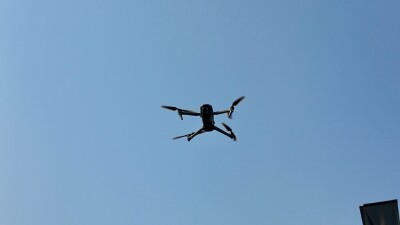May 2021 was a month of abundant news and developments for the unmanned aerial vehicle (UAV) and urban air mobility (UAM) industry. Especially when it comes to the National Aeronautics and Space Administration’s (NASA) efforts to advance independent and autonomous flight in the national airspace (NAS).
At the beginning of the month, it was reported that five state and local government entities have signed agreements with NASA’s aeronautical innovators to work together to determine how emerging cargo-carrying drone and passenger-carrying air taxi services can best be included in their civic transportation plans.
The five government entities who signed cooperation agreements with the space agency include the Massachusetts Department of Transportation; Minnesota Department of Transportation; the North Central Texas Council of Governments Department of Transportation; the Ohio Unmanned Aircraft Systems Center of the Ohio Department of Transportation; and the City of Orlando, Florida. The agreements will seek to address a wide range of pertinent topics related to UAM, from identifying a common set of terms to use in discussions and planning documents to evaluating potential criteria that might be used in locating future “vertiports” for vertical takeoff and landing aircraft and documenting “best practices”. These are all important undertakings that other states and municipalities will be able to follow when developing their own plans for integrating UAM into their transportation systems.
With the announcement of these agreements, NASA recognizes the enormous importance that local governments will have in the future deployment of air taxis over urban areas and how these flights might help alleviate current transportation challenges facing these communities.
In other news, ANRA Technologies recently announced it had won NASA’s Aeronautics Research Mission Directorate National Campaign 2 for Advanced Air Mobility (AAM), also known as UAM, for Community Planning and Integration activities to address key safety and integration barriers together with FlyOhio, a collaboration of public, private and academic institutions led by DriveOhio’s AAM group. With this announcement NASA grants FlyOhio an opportunity to collaborate with NASA’s R&D team on multi-modal transportation planning, modeling/simulations of the AAM portion of a transportation system, public acceptance (including noise issues), community engagement, infrastructure planning, and contingency planning for opportunities to demonstrate UAM operations in various scenarios.
In addition, in Mid-May NASA announced it has entered into a Space Act Agreement (SAA) with The Longbow Group, LLC with the intention of establishing beyond visual line-of-sight (BVLOS) flight-corridors for UAM and UAVs flight tests in Hampton Roads, Virginia.
Why Is NASA’s Announcements on UAM/AAM Important?
One of the most important issues that still needs to be addressed if we want to launch regular air taxi services is developing the ground infrastructure to serve these vehicles. In one word, we are talking about vertiports. A vertiport is a collective term referring to areas designed specifically for UAM aircraft to take off and land, much like a heliport is a designated area for helicopters.
The Longbow announcement goes a bit further by establishing the new concept of High Density Vertiplex (HDV) in which both entities will work on the development of a prototype that would assess the UAM ecosystem using small UAV (sUAV) as surrogates for larger UAM aircraft. Another objective of HDV is to perform the testing, safety risk assessments, documentation, and collaboration with the FAA to enable routine BVLOS flights at NASA Langley.
HDV is also an issue in which NUAIR (Northeast UAS Airspace Integration Research Alliance, Inc.) has been heavily involved and will make the difference between massive deployment of UAMs.
These trials also tackle the challenge of developing mainstream services with unmanned traffic management (UTM), which is a necessary hurdle to overcome to deploy hundreds if not thousands of unmanned vehicles without overwhelming current air traffic control (ATC) infrastructure and endangering the flying public.
May 2021 marked the end of NASA’s UTM project, which for years aimed, and in our view succeeded, in the development of a new way to treat unmanned aviation as a viable player in the NAS without adding stress to ATC.
The UTM team at NASA invented a totally new way to handle the airspace: a style of air traffic management where multiple parties, from government to commercial industry, work together to provide services. UTM’s research results were transferred incrementally to the FAA, which continues testing and, with industry partners, is implementing the system. By the time the project officially wrapped up a few days ago, several efforts had emerged to push this line of research into other realms, including managing traffic for the flying taxis envisioned for our cities as well as flights of jets and even balloons at very high altitudes not currently covered by traditional air traffic management.
NASA’s ambitious UTM project may be concluded, but its efforts, in partnership with local governments, academia, the FAA, and private industry will continue until we see manned and unmanned aircraft sharing the NAS safely and cooperatively.
In short, May 2021 was a good month for our industry.















Comments